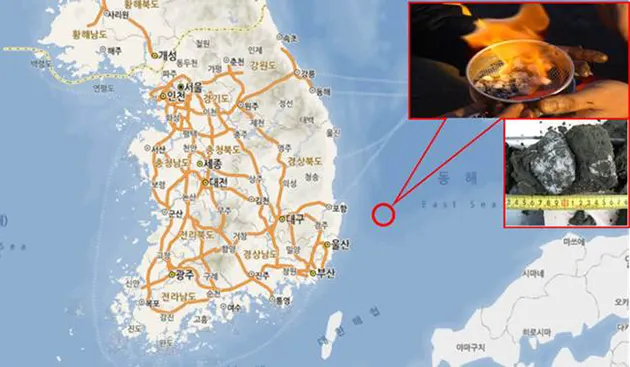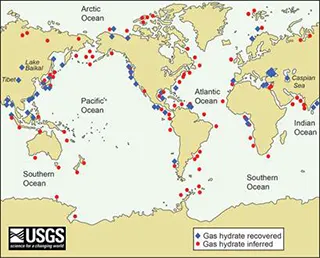A New Potential Energy Resource
Naturally occurring gas hydrates can be found in the deep ocean sediment of continental margins and in the permafrost regions. Due to the vast amounts of gas hydrates occurring in nature, they are regarded as a new potential energy resource and one possible solution to the world's energy concerns.
It has been reported that natural gas hydrates of about 600 million tons are deposited in East Sea of Korea. In 2007, Korea succeeded in actually sampling natural gas hydrates in East Sea.
Exploitation Methods
Gas Storage and Transportation
Due to a growth of global natural gas demand, geopolitical risks, and concerns of naval accidents, it is required to develop diversified methods to transport natural gas economically and safely from remote gas fields to marketplaces. Liquefied Natural Gas (LNG) technology is preferably adopted to transport gas when the gas pipelines are not available. However, in case of LNG, natural gas should be under cryogenic conditions of below -162 ˚C, and accordingly the total cost of the LNG chain, including liquefaction plant and LNG tanks becomes quite uneconomic for medium or small scale gas transport projects. It is well known that each volume of natural gas hydrate (NGH) can contain as much as 172 volumes of gas at standard temperature and pressure conditions. Besides, NGH can be stored and transported safely at about -20 ˚C under atmospheric pressure due to so called “self-preservation effect”. Additionally, NGH is fundamentally safe substance because it is solid crystalline bulk with water molecules.





